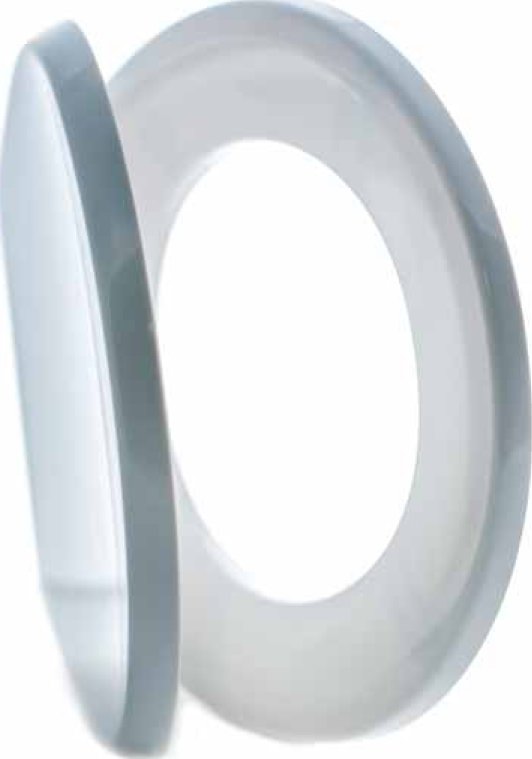Solidity, being warm to the touch and high density are the characteristics that summarize the properties of urea formaldehyde. A nitrogen-rich waste product of urine, which, to produce a plastic compound, is condensed with formaldehyde. Part of this process yields a water-soluble liquid, which is used in adhesives and coatings, particularly in making pressed wood products such as medium-density fibreboard (MDF). The final part of the process yields a water- and chemical resistant resin for plastic moulding.
As a thermoset material it was one of the first materials to give Bakelite the shoulder because, unlike Bakelite, it could be moulded and produced in many more colour variations. Because of its heavy weight and general feel it has a high-perceived value. Ureaformaldehyde resin’s attributes include high tensile strength, flexibility, and heat distortion temperature, low water absorption, high surface hardness, elongation at break, and volume resistance.
The toilet seat shown here is by Celmac, who utilize urea formaldehyde for its durable and resistant qualities, and also because it has the additional benefit of containing natural hygienic properties.
Image: Celmac toilet seat

Key features
•Excellent chemical resistance
•Excellent electrical insulation
•Easily coloured
•Excellent stain resistance
•Excellent heat resistance
•Warm to the touch
•Excellent hardness
Sources
Available from multiple global suppliers.
Cost
Low cost relative to comparative thermosets such as melamine. £0.64 ($1) per kg.
Sustainability issues
As with all thermosets, urea formaldehyde cannot be re-melted and re-moulded, so is not conventionally recyclable. Issues arose in previous decades with UF foam cavity wall insulation that was shown to be releasing formaldehyde into the air and causing health problems, but these days it is replaced with melamine formaldehyde and other low-emission UF insulation materials.
Production
As a moulding compound it is usually compression moulded. It can also be injection moulded to a limited degree, usually with fillers.
Typical applications
Electrical switch plates, junction boxes, toilet seats, caps and closures for perfume bottles, buttons, adhesives and doorknobs. It can also be foamed for use as cavity insulation in buildings, and is used extensively in decorative laminates.
| + | – |
|
–Good chemical-, stain-, and heat resistance –Hard and strong –Takes colour well –Cost-effective |
–Not recyclable –In some applications, formaldehyde can be released into the air causing health problems |
